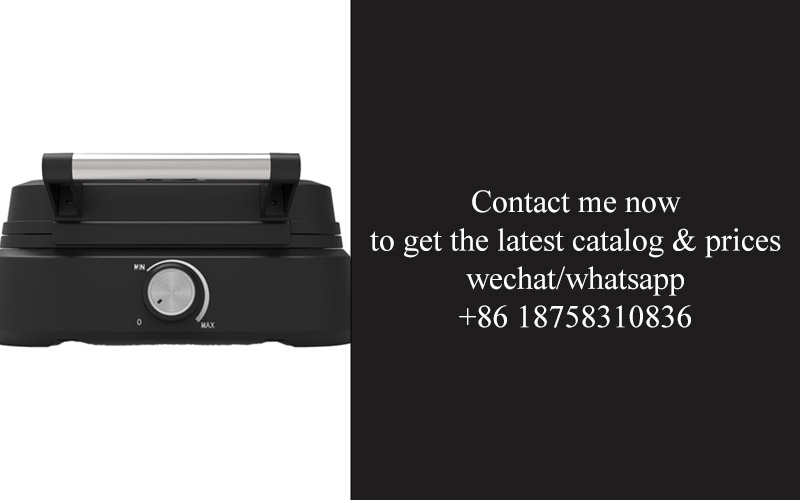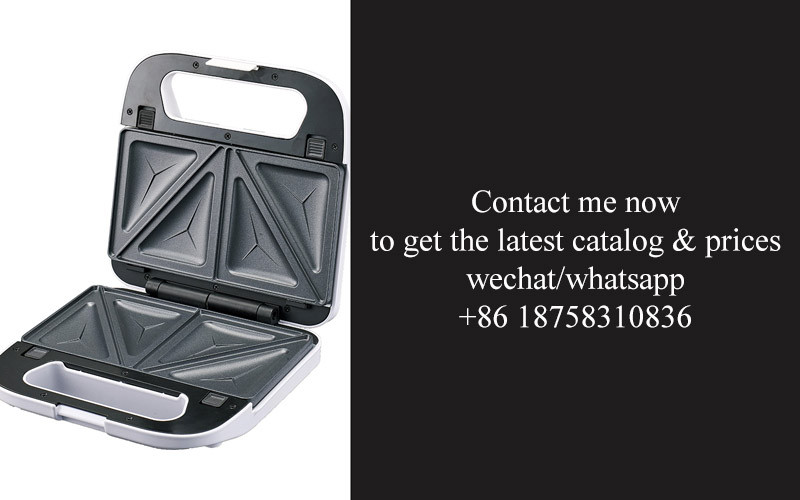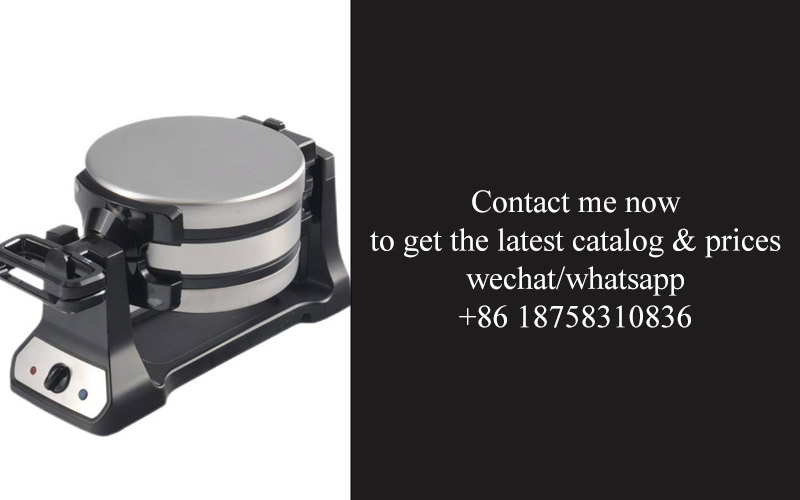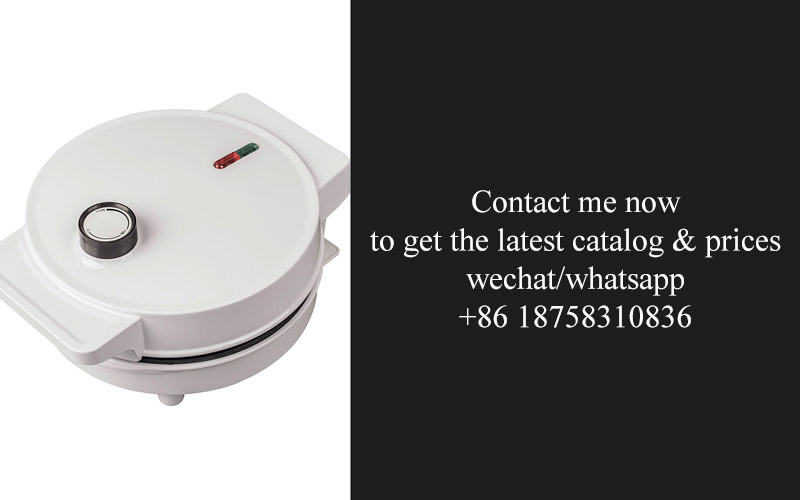Address
304 North Cardinal
St. Dorchester Center, MA 02124
Work Hours
Monday to Friday: 7AM - 7PM
Weekend: 10AM - 5PM
Address
304 North Cardinal
St. Dorchester Center, MA 02124
Work Hours
Monday to Friday: 7AM - 7PM
Weekend: 10AM - 5PM

In a world where innovation meets the art of cooking, the evolution of kitchen appliances has been nothing short of remarkable. One such innovation that has been quietly reshaping our culinary experiences is the sandwich plate. This article delves into the intricate details of these specialized kitchen tools, exploring their construction, market trends, and the benefits they bring to both home cooks and professional chefs alike. Join us as we uncover the story behind the rise of the sandwich plate and its role in the ever-evolving kitchen appliance industry.
The kitchen appliance landscape has been witnessing a significant shift, with sandwich plates emerging as a game-changer in the realm of culinary innovations. These versatile and sleek devices have quickly gained popularity, becoming a staple in modern kitchens. The rise of sandwich plates can be attributed to several factors that have revolutionized the way we cook and enjoy our meals.
The convenience factor is undeniable. Sandwich plates streamline the process of preparing sandwiches, offering a compact and efficient solution for busy individuals and families. With features like adjustable heat settings and non-stick surfaces, these appliances ensure that your sandwiches are perfectly toasted, every time. The ease of use and quick preparation time have made sandwich plates a favorite among time-strapped consumers.
Another key driver behind the surge in sandwich plate popularity is the emphasis on health and wellness. As more people become health-conscious, they are seeking out kitchen gadgets that can help them make healthier choices. Sandwich plates provide a convenient way to enjoy homemade sandwiches, which are often more nutritious than their store-bought counterparts. The ability to control the ingredients and cooking methods makes these appliances a hit with health enthusiasts.
Design has also played a crucial role in the rise of sandwich plates. Manufacturers have been pushing the boundaries of innovation, creating sleek and stylish appliances that complement modern kitchen aesthetics. The sleek profiles and vibrant color options have made sandwich plates not just practical tools but also eye-catching additions to any kitchen counter.
The integration of advanced technology has further propelled the popularity of sandwich plates. Features like digital displays, programmable settings, and even Bluetooth connectivity have been incorporated into these appliances. This tech-savvy approach has appealed to tech-savvy consumers who enjoy having the latest gadgets in their homes.
Moreover, the versatility of sandwich plates cannot be overstated. These appliances are not limited to just sandwiches; they can also be used to toast bagels, grill vegetables, and even reheat leftovers. This multipurpose functionality has made sandwich plates a must-have for those who value kitchen efficiency.
The market has seen a surge in the variety of sandwich plates available, each designed to cater to different needs and preferences. From single-slot models to those with multiple slots, there’s a sandwich plate out there for everyone. The diversity in features, such as adjustable heat levels and different browning options, has allowed consumers to find the perfect match for their cooking style.
In terms of sustainability, sandwich plates have also made a positive impact. Many modern models are made from eco-friendly materials and are energy-efficient, reducing the carbon footprint associated with kitchen appliances. This eco-conscious approach has resonated with environmentally aware consumers who are looking for ways to live more sustainably.
The rise of sandwich plates has also sparked a wave of innovation in the metal stamping industry. As these appliances become more sophisticated, the demand for high-quality, precision-stamped components has increased. Integrated metal stamping for sandwich plates has become a crucial aspect of their production, ensuring that each component meets the stringent requirements of modern kitchen appliances.
The precision and durability of metal stamping make it ideal for sandwich plate construction. The ability to create intricate shapes and tight tolerances is essential for the delicate components that make up these appliances. From the heating elements to the handles and supports, metal stamping plays a pivotal role in the assembly of these versatile kitchen tools.
In conclusion, the rise of sandwich plates in kitchen appliances is a testament to the evolving needs and preferences of consumers. As these appliances continue to evolve, with new features and designs, their popularity is expected to soar even further. The integration of metal stamping into their construction is just one example of how technology and innovation are reshaping the culinary landscape.

Integrated metal stamping has emerged as a cornerstone in the evolution of kitchen appliances, particularly in the realm of sandwich plates. This manufacturing technique has not only revolutionized the way these plates are crafted but also introduced a plethora of innovative designs that cater to the dynamic needs of modern kitchens. Here’s a delve into the creative and functional aspects of these designs:
The precision of integrated metal stamping allows for intricate patterns and shapes that were once unattainable. From sleek, minimalist lines to bold, geometric forms, the designs of sandwich plates have become a canvas for creativity. These patterns not only enhance the aesthetic appeal but also serve practical purposes, such as improving grip and reducing the likelihood of slippage during use.
One of the most significant innovations in sandwich plate design is the integration of non-stick coatings. Through the metal stamping process, these coatings can be applied uniformly and precisely, ensuring that the surface of the plate is non-reactive and easy to clean. This not only extends the lifespan of the plate but also adds a layer of convenience for busy cooks.
The incorporation of ergonomic handles has also been a game-changer. Metal stamping enables the creation of handles that are not only stylish but also provide a comfortable grip. These handles can be contoured to fit the hand or include heat-resistant materials, making them safe to use even when the plate is hot.
In terms of functionality, the ability to create multi-layered sandwich plates through metal stamping has opened up new possibilities. These plates can now feature separate cooking surfaces for different types of ingredients, allowing for more precise and even cooking. The ability to stamp out intricate patterns on these layers also means that users can enjoy visually appealing plates that are as unique as their culinary creations.
The design of sandwich plates has also been influenced by the need for versatility. Metal stamping allows for the creation of plates that can be used for a variety of cooking methods, from grilling to baking. The ability to design plates with removable inserts or adjustable temperature zones means that users can tailor their cooking experience to the specific requirements of their dish.
Safety is another critical aspect that has been addressed through innovative designs in integrated metal stamping. Plates can now be designed with built-in safety features, such as heat-resistant edges or non-slip bases. These features not only protect the user but also ensure that the plate remains stable during use.
The integration of smart technology into sandwich plates has been a recent development that has been made possible by the precision of metal stamping. From temperature sensors to wireless connectivity, these plates can now offer users real-time data and feedback, enhancing both the cooking experience and the outcome of the dish.
In the world of kitchenware, sustainability is becoming increasingly important. Metal stamping offers a sustainable advantage as it allows for the creation of lightweight, durable plates that are also easy to recycle. This not only reduces the environmental impact but also extends the life of the product.
The creative designs in integrated metal stamping for sandwich plates also reflect a shift towards customization. Users can now choose from a wide range of finishes, from brushed metals to vibrant colors, allowing them to personalize their kitchenware according to their taste and style.
The evolution of sandwich plates through integrated metal stamping is a testament to the power of innovation in kitchen appliance design. These plates have moved beyond their traditional roles, becoming not just cooking tools but also statement pieces that reflect the modern cook’s desire for efficiency, convenience, and aesthetic appeal. As technology continues to advance, it’s clear that the possibilities for innovative designs in metal-stamped sandwich plates are virtually limitless.

Sandwich plates have emerged as a game-changer in the kitchen appliance industry, offering a unique and versatile solution for food preparation. To truly grasp the significance of these innovative devices, it’s essential to delve into their design and functionality.
The sandwich plate concept is both simple and sophisticated. It consists of multiple layers, each serving a specific purpose in the cooking process. The outer layers are typically made of durable materials like stainless steel or aluminum, providing strength and heat resistance. These materials are chosen for their ability to withstand high temperatures and maintain structural integrity over time.
At the core of the sandwich plate lies a unique layering system. The middle layer, often referred to as the “heat conductor,” is designed to evenly distribute heat throughout the plate. This layer is often made from materials like ceramic or a special type of metal alloy that can efficiently transfer heat while remaining stable at high temperatures.
The top layer of the sandwich plate is where the culinary magic happens. It is designed to be non-stick, making it easier to cook and clean. This layer is often coated with a high-quality non-stick material, such as PTFE (Teflon), which not only prevents food from sticking but also ensures that the surface remains smooth and easy to release food from.
One of the standout features of sandwich plates is their ability to cook food from both sides simultaneously. This dual-cooking capability is achieved through the design of the plate’s surface, which allows heat to penetrate the food from both the top and bottom. This not only shortens cooking times but also ensures that the food is perfectly cooked on both sides, reducing the risk of undercooked or overcooked areas.
In addition to their cooking capabilities, sandwich plates are also designed with ease of use in mind. The non-stick surfaces make them easy to clean, and many models come with detachable handles that allow for easy removal from the stove or oven. Some models even feature a drip tray to catch any excess grease or moisture, further simplifying the cleaning process.
The versatility of sandwich plates is another key aspect worth exploring. They can be used for a wide range of cooking methods, including frying, grilling, and even baking. Their even heat distribution ensures that food is cooked to perfection, whether it’s a crispy pancake or a juicy steak.
One of the most intriguing aspects of sandwich plates is their ability to mimic the cooking experience of traditional cooking methods like a wok or a grill. The design allows for a variety of cooking techniques, such as flipping and searing, which are essential for achieving those distinctive textures and flavors.
Another design element that sets sandwich plates apart is their modular nature. Many models come with interchangeable inserts, such as grilling plates or pizza stones, which can be swapped out based on the desired cooking style. This modular approach not only expands the range of dishes that can be prepared but also allows for easy storage, as each insert can be kept separately.
Safety is also a crucial consideration in the design of sandwich plates. The materials used are not only heat-resistant but also non-reactive, meaning they won’t impart any unwanted flavors or odors into the food. Additionally, many models include safety features like heat-resistant handles and secure locking mechanisms to prevent accidental spills or burns.
The sandwich plate’s design also takes into account the needs of modern kitchens. With compact and space-saving dimensions, these plates can fit seamlessly into any kitchen setup, from small apartments to large households. Their sleek and modern aesthetics also make them a stylish addition to any kitchen decor.
In conclusion, the sandwich plate is a testament to the power of innovative design in kitchen appliances. By combining advanced materials, thoughtful functionality, and a focus on versatility, these plates have redefined the way we cook. Whether you’re a seasoned chef or a culinary enthusiast, the sandwich plate offers a world of possibilities for creating delicious meals with ease and efficiency.

In the realm of kitchen appliances, the sandwich plate has emerged as a versatile and innovative solution. Constructed using metal stamping techniques, these plates combine multiple layers of metal to create a durable and functional component. Let’s delve into the pivotal role that metal stamping plays in the construction of sandwich plates.
The foundation of a sandwich plate lies in its layered structure, which is meticulously crafted through the metal stamping process. This technique involves the deformation of sheet metal into various shapes and sizes, often using dies and presses. The result is a plate that can withstand high temperatures, making it ideal for cooking and baking applications.
One of the primary benefits of metal stamping in sandwich plate construction is the ability to create complex geometries with precision. The stamping process allows for intricate patterns and contours, which can enhance the aesthetic appeal of the plate and improve its performance. From the sleek, modern designs to the classic, vintage styles, metal stamping offers endless possibilities for customization.
Moreover, the layered nature of sandwich plates is a direct outcome of the metal stamping process. Multiple sheets of metal are selectively stamped and stacked to form the core of the plate. This layering not only increases the plate’s heat resistance but also allows for the integration of insulating materials between layers, ensuring even heat distribution and reducing the risk of thermal shock.
The use of metal stamping in sandwich plate construction also ensures uniformity in thickness and consistency across the entire surface. This uniformity is crucial for maintaining structural integrity and ensuring that the plate can handle the demands of various cooking methods, from grilling to roasting.
In addition to its functional advantages, metal stamping contributes significantly to the environmental sustainability of sandwich plates. By utilizing metal, which is a highly recyclable material, the manufacturing process reduces waste and minimizes the carbon footprint. The longevity of these plates, due to their durable construction, also translates to a reduced need for frequent replacements, further promoting sustainability.
The stamping process also allows for the integration of various features into the sandwich plate design. For instance, built-in handles can be formed directly into the metal, providing a secure grip for users. Grooves and channels can be stamped into the plate to facilitate even cooking and easy food release. These features not only enhance the usability of the plate but also add to its appeal as a high-quality kitchen tool.
Furthermore, the metal stamping process is highly efficient, leading to cost savings for manufacturers. The ability to produce large quantities of stamped metal parts quickly and with minimal waste means that sandwich plates can be mass-produced at a competitive price point, making them accessible to a wider market.
In terms of safety, metal stamping ensures that the edges of the sandwich plate are smooth and rounded, reducing the risk of injury. The high heat resistance of the metal also means that the plate can safely be used in high-temperature environments without the risk of deformation or failure.
As technology advances, the role of metal stamping in sandwich plate construction continues to evolve. Innovations such as high-speed stamping machines and advanced materials are being employed to create even more sophisticated and efficient sandwich plates. These advancements are not only improving the performance of the plates but also opening up new possibilities for design and functionality.
In conclusion, metal stamping is an integral part of the sandwich plate construction process, providing the foundation for a durable, efficient, and aesthetically pleasing kitchen appliance. The precision, versatility, and sustainability of this technique make it a cornerstone of modern kitchen technology. As the demand for high-quality kitchenware continues to grow, the role of metal stamping in shaping the future of sandwich plates is undeniable.

In recent years, the kitchen appliance industry has seen a surge in innovation, particularly in the realm of sandwich plates. These versatile cooking tools have become a staple in many kitchens, offering a convenient and efficient way to prepare a variety of dishes. Let’s delve into the latest industry trends and market insights surrounding sandwich plates.
The demand for sandwich plates has been fueled by a shift towards healthier eating habits and a preference for quick, homemade meals. Consumers are increasingly looking for appliances that can help them achieve culinary perfection without compromising on nutrition or taste. This trend has led to a surge in the development of advanced sandwich plates that cater to these evolving needs.
One significant trend in the market is the integration of smart technology into sandwich plates. These smart appliances not only offer the convenience of automated cooking but also provide users with real-time data and analytics to optimize their cooking processes. Features like temperature control, timer settings, and even Bluetooth connectivity for remote monitoring have become increasingly popular.
Moreover, there’s a growing emphasis on sustainability and eco-friendly designs in the kitchen appliance industry. Sandwich plates are no exception, with manufacturers focusing on using recycled materials and energy-efficient components. This not only aligns with consumer values but also contributes to a reduced carbon footprint.
The market for sandwich plates is also witnessing a rise in the customization of these appliances. Consumers are looking for products that can be tailored to their specific preferences and cooking styles. This has spurred the creation of sandwich plates with adjustable heating elements, various baking surfaces, and even modular designs that allow for easy upgrades and repairs.
Another key trend is the crossover between kitchen appliances and kitchenware. Brands are now offering sandwich plates that are not only functional but also aesthetically pleasing, serving as a centerpiece in modern kitchens. This convergence of form and function has made sandwich plates not just a cooking tool but also a piece of home decor.
In terms of market insights, the sandwich plate segment is experiencing rapid growth in regions such as North America and Europe, where there is a strong emphasis on convenience and innovation. However, emerging markets like Asia and Latin America are also showing significant potential, driven by increasing disposable incomes and a growing middle class.
The competitive landscape is becoming more dynamic, with established appliance brands vying for market share against new entrants specializing in sandwich plates. This competition is leading to constant innovation and a wider variety of products available to consumers. The market is also seeing a rise in collaborations between appliance manufacturers and foodservice companies, as they seek to develop products that cater to both home and commercial use.
From a regulatory perspective, the industry is under scrutiny to comply with stricter safety and quality standards. This means that manufacturers must ensure that their sandwich plates meet stringent testing and certification requirements, which can be both challenging and costly but is ultimately beneficial for consumer confidence.
Looking ahead, the future of sandwich plates appears to be bright. With the continued integration of smart technology, a focus on sustainability, and a growing emphasis on customization, these appliances are poised to become even more indispensable in modern kitchens. The market insights suggest that as long as consumers seek convenience, efficiency, and culinary versatility, the sandwich plate industry will continue to thrive.

In the realm of kitchen appliances, sandwich plates have emerged as a game-changer, offering a unique blend of functionality and design. The process of integrating metal stamping into these plates has not only enhanced their performance but also brought numerous advantages to both manufacturers and consumers. Let’s delve into the benefits that this innovative approach brings to sandwich plates.
The precision and consistency of metal stamping allow for the creation of intricate patterns and shapes that are often impossible to achieve through other manufacturing methods. This precision translates into a sandwich plate that is not just visually appealing but also highly efficient in its operation.
One of the most significant benefits is the durability of the sandwich plates. Metal stamping ensures that the plates are robust and can withstand the rigors of everyday kitchen use. The thick, high-quality metal used in the stamping process makes the plates resistant to warping, corrosion, and scratches, ensuring they maintain their integrity over time.
The ability to customize the design of sandwich plates through metal stamping is another advantage. Manufacturers can create unique and tailored solutions for various kitchen appliances, from ovens to refrigerators. This customization allows for a seamless integration of the sandwich plate into the overall design of the appliance, enhancing both the aesthetic appeal and the user experience.
Efficiency is a key factor in kitchen appliances, and metal stamping plays a crucial role in optimizing this aspect. The uniformity and strength of metal stamped components mean that the sandwich plates can distribute heat more evenly, improving cooking performance. This even distribution of heat is essential for maintaining the quality and texture of food, whether it’s baking, roasting, or grilling.
In terms of cost-effectiveness, integrated metal stamping offers a competitive edge. The process is highly automated and can produce large quantities of sandwich plates with minimal waste. This efficiency reduces manufacturing costs, allowing for more affordable products for consumers. Additionally, the longevity of metal stamped sandwich plates means fewer replacements are needed, further contributing to cost savings.
The environmental impact of kitchen appliances is a growing concern, and metal stamping addresses this issue. Metal is a recyclable material, and the stamping process is energy-efficient. By choosing metal stamped sandwich plates, manufacturers and consumers are making a more sustainable choice, reducing their carbon footprint and contributing to a greener future.
Safety is paramount in kitchen appliances, and metal stamping enhances this aspect as well. The high thermal conductivity of metal ensures that sandwich plates can quickly and effectively transfer heat, reducing the risk of burns or fires. The strength and stability of the metal also contribute to the overall safety of the appliance, providing peace of mind to users.
Another advantage is the versatility of metal stamping. It allows for the creation of sandwich plates with different configurations and specifications to meet specific appliance requirements. Whether it’s a single-layer or multi-layer design, the stamping process can accommodate a wide range of needs, making it a flexible solution for manufacturers.
The aesthetic appeal of metal stamped sandwich plates cannot be overstated. The sleek, modern look of these plates adds a touch of sophistication to kitchen appliances, appealing to consumers who value both form and function. This aesthetic advantage can differentiate products in a competitive market, making them more attractive to consumers.
Lastly, the ease of maintenance is a significant benefit. Metal stamped sandwich plates are straightforward to clean, and their durability means they can withstand harsh cleaning agents without losing their finish. This ease of maintenance contributes to the overall satisfaction of users, who appreciate appliances that are both functional and low-maintenance.
In summary, the benefits of integrated metal stamping for sandwich plates are multifaceted. From enhanced durability and precision to cost-effectiveness and environmental sustainability, this manufacturing process offers a range of advantages that contribute to the success of kitchen appliances in today’s market. As technology continues to evolve, it’s clear that metal stamping will remain a vital component in the construction of high-quality, efficient, and visually appealing sandwich plates.

In the realm of kitchen appliances, the integration of metal stamping into sandwich plate construction has become a game-changer. Let’s delve into a few case studies that showcase successful implementations in the market.
The kitchen of the modern household is a testament to the evolution of technology and design. One such evolution is the advent of sandwich plates, which have transformed the way we cook and serve meals. Case studies of these innovative products highlight not just the technological advancements but also the practical benefits they bring to consumers.
In one such study, a leading manufacturer of kitchen appliances introduced a line of sandwich plates that featured a unique stamping process. The plates were designed to withstand high temperatures while maintaining their structural integrity. The case study detailed how the integration of metal stamping allowed for a uniform thickness across the plate, ensuring even heat distribution during cooking.
This innovative approach was a hit with consumers who sought out durable and efficient cookware. The stamping process not only improved the durability but also the aesthetic appeal of the sandwich plates. The seamless, sleek design was a stark contrast to the traditionally bulky and heavy cookware available in the market.
Another case study focused on a mid-range appliance brand that aimed to provide a cost-effective solution for those looking to upgrade their kitchenware. By utilizing metal stamping, the company was able to reduce production costs without compromising on quality. The sandwich plates were lighter and more resistant to rust and corrosion, making them a popular choice among budget-conscious consumers.
The case study highlighted the versatility of metal stamping in creating various designs and shapes. The plates were available in a range of sizes and styles, from traditional round and square models to more contemporary, geometric designs. This adaptability allowed the brand to cater to a wide customer base, from those who preferred classic kitchenware to those who wanted something more modern and avant-garde.
In yet another instance, a premium kitchen appliance brand incorporated advanced metal stamping techniques to create sandwich plates that were not only functional but also had a high-end look. The case study revealed that the use of high-quality metals and precise stamping processes resulted in plates that were both visually stunning and extremely durable. These plates were often used in professional kitchens and by culinary enthusiasts who sought the best in performance and presentation.
The success of these products in the market was further bolstered by customer feedback. Users praised the ease of cleaning, the non-stick surfaces, and the overall longevity of the sandwich plates. The case studies also pointed out the environmental benefits of metal stamping, such as the reduced need for additional coatings or plating, which in turn decreased the amount of waste and energy consumption in production.
Additionally, one case study showcased how a small, family-owned cookware manufacturer leveraged metal stamping to enter the competitive kitchen appliance market. By focusing on custom designs and high-quality materials, the company was able to carve out a niche for itself. The case study emphasized how the flexibility of metal stamping allowed for the creation of unique and personalized sandwich plates, which were a hit with both gift-givers and collectors.
As the case studies demonstrate, the integration of metal stamping in sandwich plate construction has opened up a world of possibilities for kitchen appliance manufacturers. From enhancing durability and efficiency to offering a variety of designs and styles, the technology has proven to be a valuable asset in the market.
The success of these products can be attributed to several factors. Firstly, the precision and consistency of metal stamping ensure that each sandwich plate meets the highest quality standards. Secondly, the ability to produce a wide range of designs at scale allows manufacturers to cater to diverse consumer preferences. Lastly, the environmental benefits of metal stamping, such as reduced waste and energy consumption, align with the growing demand for sustainable products.
In conclusion, the case studies of successful implementations in the market show that metal stamping is not just a functional aspect of sandwich plate construction; it is a key factor in driving innovation and customer satisfaction. As the kitchen appliance industry continues to evolve, it is clear that the role of metal stamping will remain pivotal in shaping the future of cookware.

The evolution of sandwich plate design has been marked by a series of innovations that cater to both aesthetic preferences and functional efficiency. As technology advances, the future of sandwich plates looks promising, with several trends emerging that are poised to shape the industry. One such trend is the integration of smart technology, which not only enhances the user experience but also contributes to sustainability. Here’s a closer look at some of the future prospects and innovations in sandwich plate design:
Materials continue to play a crucial role in the design of sandwich plates. The shift towards eco-friendly materials, such as recycled stainless steel and biodegradable plastics, is gaining momentum. These materials not only reduce the environmental impact but also offer durability and resistance to corrosion, ensuring that the plates stand the test of time.
Smart functionality is becoming increasingly integrated into kitchen appliances, and sandwich plates are no exception. Features like temperature control, built-in timers, and energy-saving modes are being incorporated to make cooking more precise and efficient. This not only benefits the user but also contributes to energy conservation.
Designs are becoming more modular, allowing for customization and versatility. Users can now choose components that best fit their cooking styles and kitchen layouts. For instance, removable burners and interchangeable inserts offer the flexibility to adapt the sandwich plate to various cooking needs, from grilling to steaming.
The integration of IoT (Internet of Things) technology is another significant innovation. Users can now connect their sandwich plates to smartphones or home automation systems, allowing for remote control and monitoring. This connectivity not only adds convenience but also enables predictive maintenance, which can prevent costly repairs and extend the life of the appliance.
Energy efficiency is a key concern for manufacturers and consumers alike. Newer sandwich plate designs are focusing on reducing energy consumption without compromising performance. Advanced heat distribution systems and energy-saving technologies are being developed to minimize energy use and lower utility bills.
Sustainability is at the forefront of many design decisions. The use of sustainable materials, energy-efficient components, and recyclable parts is not just a trend but a commitment to environmental stewardship. Companies are also exploring ways to reduce waste throughout the manufacturing process.
Safety features are being refined to protect users and prevent accidents. This includes improved heat-resistant handles, automatic shut-off mechanisms, and child safety locks. These features are designed to offer peace of mind while using the sandwich plate.
Cooking performance is always a top priority, and new designs are pushing the boundaries. High-quality non-stick coatings, enhanced heat retention, and precise temperature control are some of the features that are making sandwich plates more effective and versatile cooking tools.
The integration of health-conscious features is also becoming more prevalent. For example, some sandwich plates come with steam-only settings, which are perfect for cooking vegetables and meats in a healthier way. These features cater to the growing demand for nutritious and low-fat cooking methods.
The aesthetic appeal of sandwich plates is also being reconsidered. Sleek designs, color options, and modern finishes are becoming more popular, as consumers seek appliances that not only perform well but also complement their kitchen decor.
In conclusion, the future of sandwich plate design is bright, with a focus on sustainability, smart technology, user convenience, and safety. As the industry continues to evolve, we can expect to see even more innovative features that make cooking not just easier, but also more enjoyable and environmentally responsible.

In the realm of kitchen appliances, the intersection of technology and cooking efficiency has paved the way for groundbreaking innovations. As we delve into the conclusion of our exploration, it’s clear that the fusion of advanced technology with the art of cooking has led to a transformative era in culinary experiences. From precision engineering to smart features, the evolution of sandwich plate design reflects a commitment to enhancing both convenience and culinary excellence. Let’s reflect on the key aspects that define this technological marriage.
The integration of sensors and smart technology in sandwich plates has revolutionized the way we interact with our cooking appliances. These plates are not just tools for food preparation; they are intelligent companions that can adjust cooking times and temperatures based on the ingredients and desired outcome. Users can now enjoy a level of control that was once unimaginable, all while the technology works silently in the background, ensuring optimal cooking conditions.
The design of sandwich plates has also embraced modular components, allowing for customization and versatility. Users can swap out parts to accommodate different types of cookware, from cast iron skillets to non-stick pans, without the need for separate appliances. This modular approach not only saves space but also reduces the environmental impact by extending the lifespan of kitchenware.
Energy efficiency has become a cornerstone in the development of modern sandwich plates. With the increasing awareness of climate change and the push towards sustainability, manufacturers have focused on creating appliances that consume less energy without compromising performance. The result is a kitchen environment where energy-saving features are as standard as they are innovative.
The rise of smart connectivity in sandwich plates has opened up a world of possibilities. These appliances can now be controlled remotely through smartphones or smart home systems, allowing users to start or monitor cooking processes even when they are not at home. This level of connectivity enhances convenience and provides peace of mind, especially for those who are often away from their kitchens.
In the realm of safety, sandwich plates have seen significant advancements. With features like automatic shut-off in case of overheating or unattended cooking, modern appliances have become far less prone to accidents. Additionally, the incorporation of childproof locks and anti-slip bases ensures that these appliances are safe for all members of the household, from the youngest to the oldest.
The aesthetic appeal of sandwich plates has also been redefined. Sleek designs, innovative materials, and thoughtful color palettes have made these appliances not just functional but also stylish. They no longer occupy a back corner of the kitchen; instead, they are a centerpiece that complements the overall design of the space.
From a market perspective, the demand for these advanced sandwich plates is growing. Consumers are increasingly seeking appliances that not only perform well but also reflect their personal style and values. The market for smart kitchen gadgets is expanding, and sandwich plates are at the forefront of this trend.
Looking ahead, we can expect further innovations in sandwich plate design. The potential for integrating AI and machine learning to provide personalized cooking recommendations based on user preferences and dietary needs is immense. Imagine a sandwich plate that learns your taste preferences and suggests recipes accordingly, all while optimizing cooking parameters for the best results.
The future of sandwich plate design is also likely to see a greater emphasis on sustainability. As awareness of environmental issues continues to rise, manufacturers will be under pressure to produce appliances that are not only efficient but also made from recyclable or biodegradable materials. This shift will not only benefit the planet but also resonate with environmentally conscious consumers.
In conclusion, the intersection of technology and cooking efficiency in sandwich plate design represents a significant leap forward for the kitchen appliance industry. It’s a testament to human ingenuity and the relentless pursuit of better living. As these appliances continue to evolve, they will undoubtedly shape the way we cook, eat, and enjoy our culinary experiences for years to come.